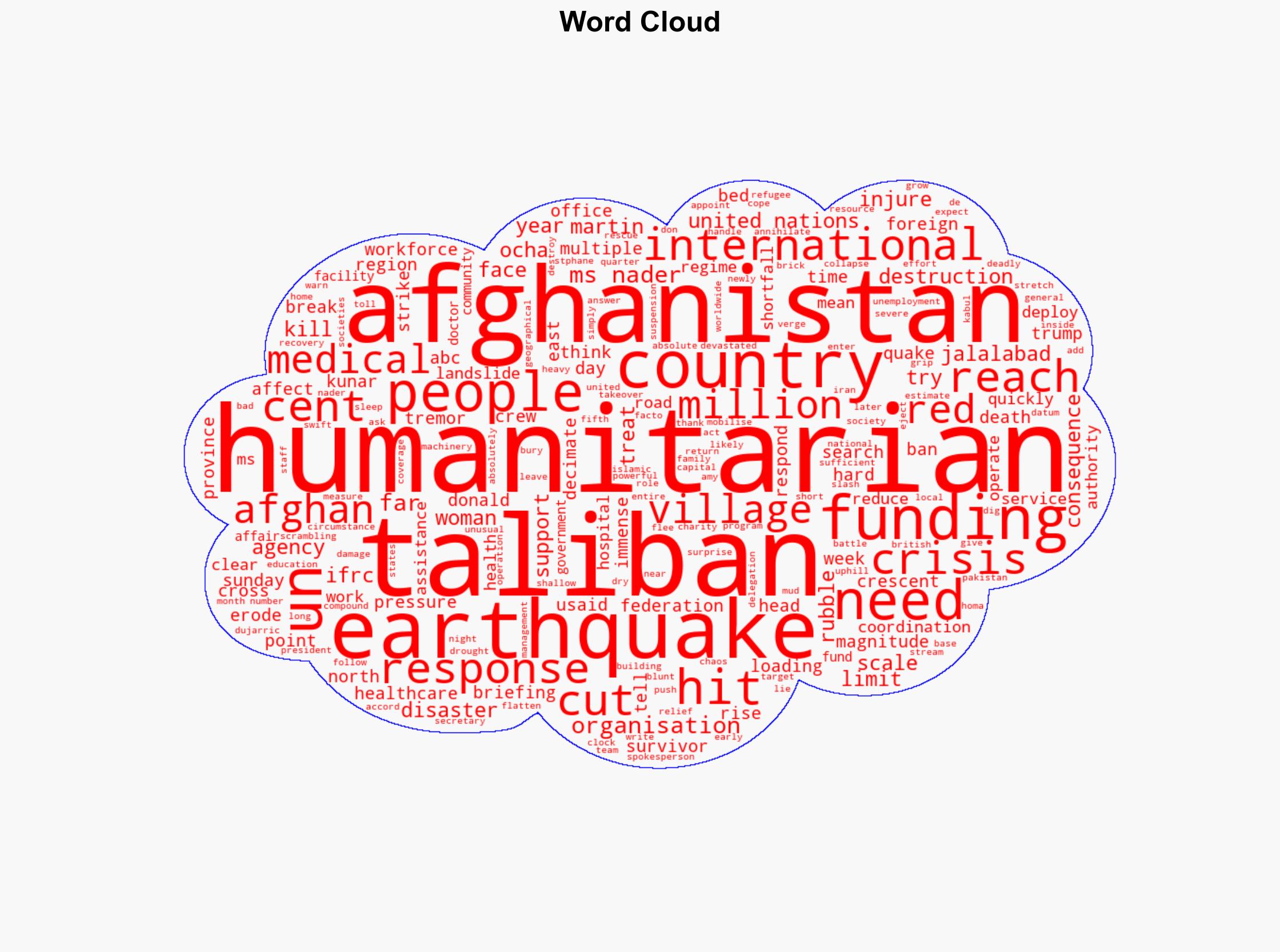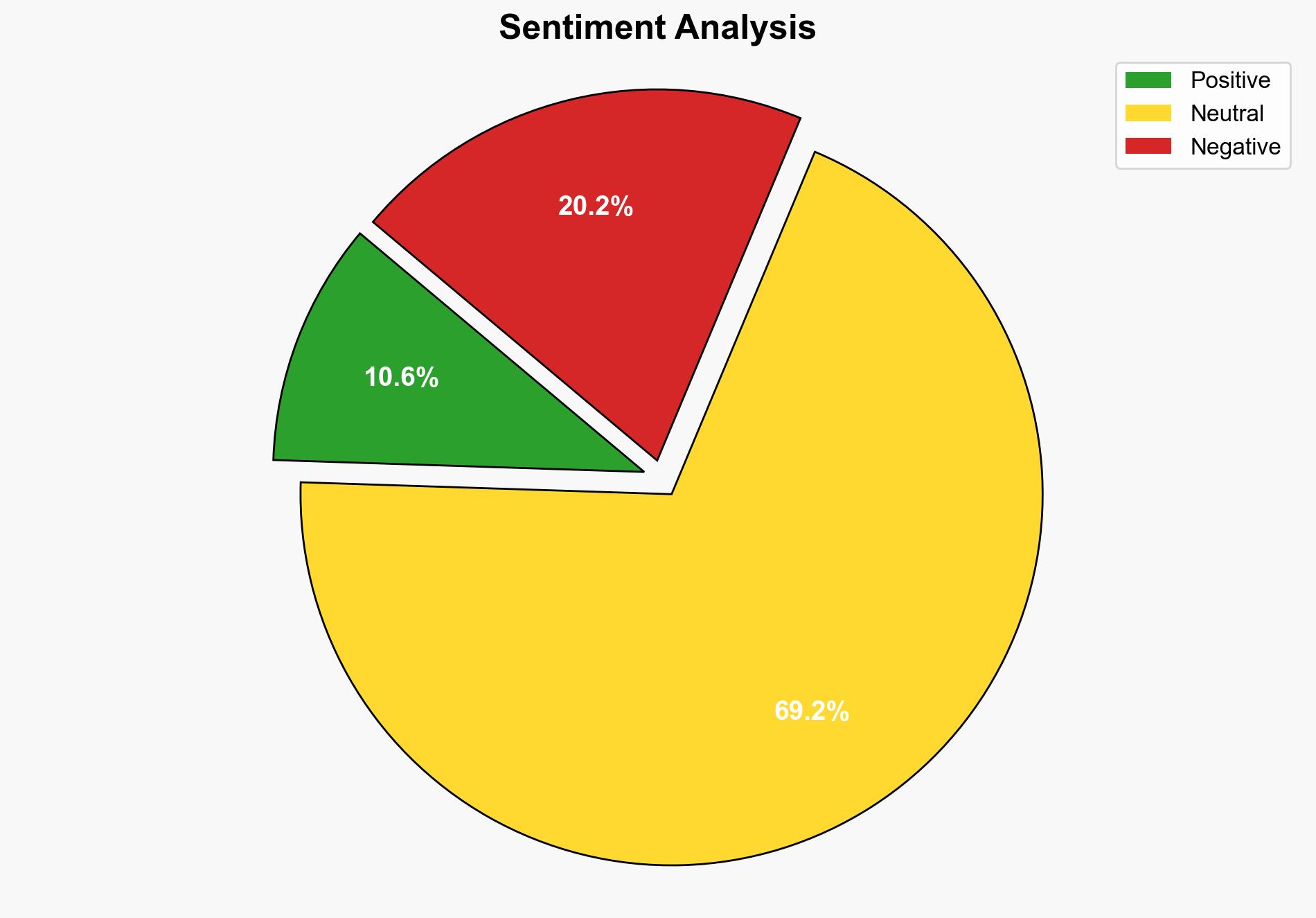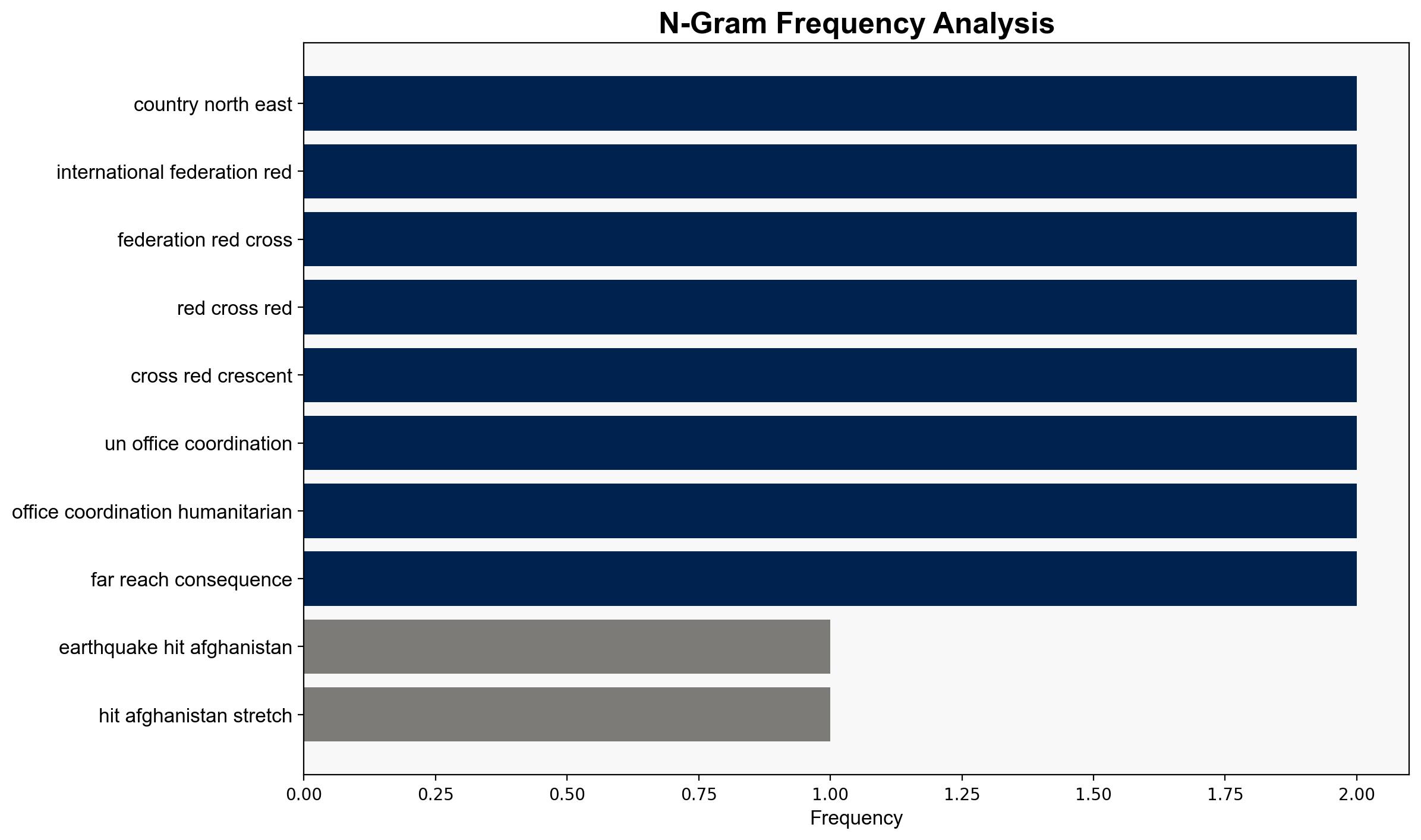Afghanistan stretched by ‘death and destruction’ after earthquakes – ABC News (AU)
Published on: 2025-09-04
Intelligence Report: Afghanistan Stretched by ‘Death and Destruction’ After Earthquakes – ABC News (AU)
1. BLUF (Bottom Line Up Front)
The most supported hypothesis is that the Taliban’s swift response to the earthquake demonstrates an unexpected capacity for crisis management, albeit limited by resource constraints. Confidence level: Moderate. Recommended action: Increase international humanitarian support and diplomatic engagement to stabilize the region and prevent further humanitarian deterioration.
2. Competing Hypotheses
1. **Hypothesis A**: The Taliban’s response to the earthquake indicates a growing capability to manage humanitarian crises, potentially improving their domestic legitimacy.
2. **Hypothesis B**: The Taliban’s response is primarily a facade, with underlying resource constraints and international isolation severely limiting their effectiveness.
Using ACH 2.0, Hypothesis A is better supported by evidence of the Taliban’s quick mobilization of resources and machinery, as noted by Amy Martin of the UN. However, Hypothesis B remains plausible due to the severe funding cuts and limited international aid, as highlighted by the IFRC and OCHA data.
3. Key Assumptions and Red Flags
– **Assumptions**: It is assumed that the Taliban’s response is indicative of their overall governance capacity. Another assumption is that international aid will remain limited due to political considerations.
– **Red Flags**: The lack of detailed data on the actual effectiveness of the Taliban’s response and the potential bias in reporting by humanitarian agencies with limited access.
– **Blind Spots**: The potential influence of regional actors like Iran and Pakistan on Afghanistan’s internal stability is not addressed.
4. Implications and Strategic Risks
The humanitarian crisis could exacerbate regional instability, potentially leading to increased refugee flows and cross-border tensions. Economic deterioration may heighten internal dissent against the Taliban, while geopolitical isolation could drive Afghanistan closer to non-Western allies. The psychological impact on the Afghan population could lead to long-term societal trauma and hinder recovery efforts.
5. Recommendations and Outlook
- **Mitigation**: Encourage international organizations to increase humanitarian aid, focusing on immediate relief and long-term recovery.
- **Exploitation**: Use diplomatic channels to engage the Taliban on humanitarian grounds, potentially opening avenues for broader dialogue.
- **Scenario Projections**:
– **Best Case**: Increased international aid stabilizes the situation, reducing humanitarian suffering and improving regional relations.
– **Worst Case**: Continued isolation and insufficient aid lead to a humanitarian catastrophe, escalating regional instability.
– **Most Likely**: A moderate increase in aid stabilizes the immediate crisis, but long-term challenges persist without broader international engagement.
6. Key Individuals and Entities
– Amy Martin (UN Office for the Coordination of Humanitarian Affairs)
– Homa Nader (International Federation of Red Cross and Red Crescent Societies)
– Stéphane Dujarric (UN Spokesperson)
7. Thematic Tags
national security threats, humanitarian crisis, regional stability, international aid, Taliban governance




